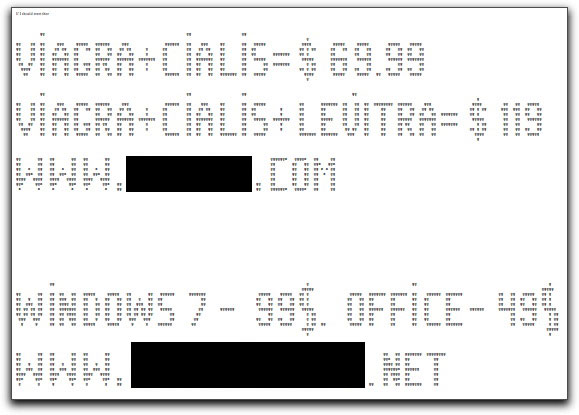| Home | The Book | Training | Events | Tools | Stats |
November 01, 2009
Spam, 1980s StyleOne semi-advantage of being the old fart that I am is that I have seen a lot in my many years and can recognize things from decades ago (just don't ask me where I set down my car keys). Such is the case with a spammer doing most of his operation out of China who is using what is known as ASCII art to convey his message.
Put on your time traveler hat, and set the dial to the early 1980s, when personal computers usually printed on fanfold paper, most commonly in a monospaced typeface. That is, every character, whether the slim "i" or fat "w", occupied the same horizontal space in a line. It not only made it easy to line up columns of numbers for boring reports, but also provided an invisible grid that could be replicated in every printer. By carefully placing letters in positions on the grid, one could create a mosaic-like piece of art. When viewed at a bit of a distance, the "image" could be plainly seen. This technique actually started back in the early typewriter days (late 1890s), moving onto clattering teletype machines, and, in the computing days, became known as ASCII art (named after a standard character set).
ASCII art is almost a lost art because these days printers and computer screens successfully render proportional font families, which are generally more pleasing to read. And if there is one thing that a proportional font does really well, it's screw up ASCII art that depends on a monospaced font.
But that didn't stop our spammer from using HTML and a tag that renders in a monospace font to convey his medz and warez spam message (a one-stop shopping spammer) via the lowercase "g" character:
For extra measure, this guy surrounded the ASCII art portion with fragments from English poetry (Ralph Waldo Emerson and Lord Byron, respectively) — a common hash-busting technique to trick content filters.
Yawn.
Posted on November 01, 2009 at 10:19 AM

